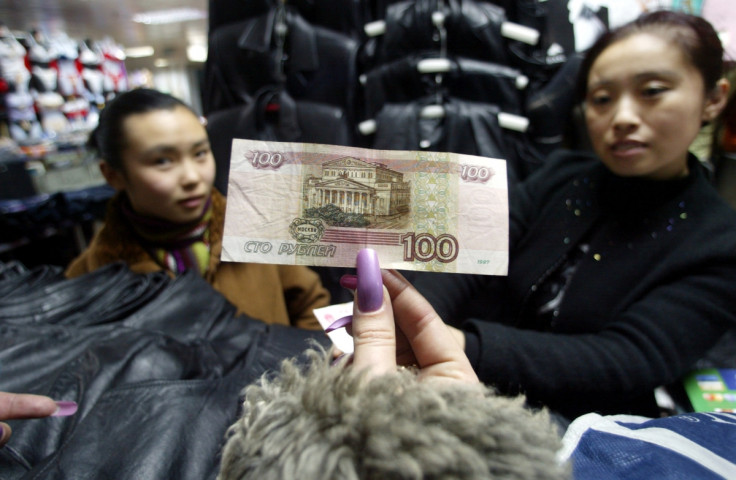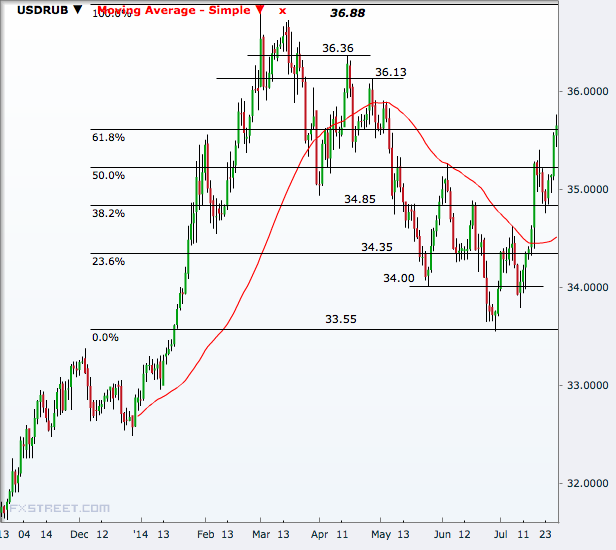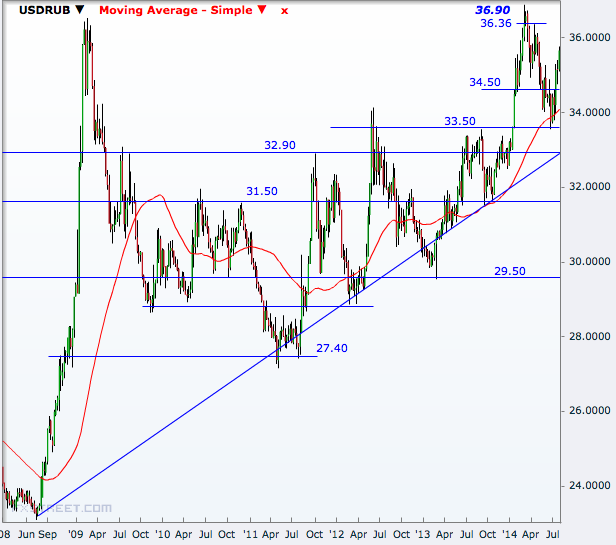Russian Ruble Falls to 12-Week Low on Sanctions

The Russian ruble stayed southbound as threats of more sanctions from the developed world weighed on sentiment, sending the USD/RUB pair to a 12-week high on 29 July.
The US President and European leaders agreed on Monday to widen the net of sanctions against Russia's financial, defence and energy sectors in retaliation for its involvement in Ukraine.
USD/RUB rose to 35.77 on Tuesday, its highest since 6 May, from the previous close of 35.56. The pair has been on a rising trend since 27 June, when it touched a six-month low of 33.55.
The ruble has weakened more than 6.2% against the US dollar since then.
Policy Response
On 25 July, Russia's central bank unexpectedly raised its key lending rate to 8% from 7.5%, in order to curb inflation expectations and stabilise the exchange rate dynamics.
"Inflation deceleration in July 2014 has been slower than expected. At the same time, inflation risks have increased due to a combination of factors, including, inter alia, the aggravation of geopolitical tension and its potential impact on the ruble exchange rate dynamics, as well as potential changes in tax and tariff policy," the policy statement said.
The central bank said it will continue to hike rates if high inflation risks persist.
"The adopted decision is aimed at slowing the consumer price growth to the 4.0% target level in the medium term. If high inflation risks persist, the Bank of Russia will continue raising the key rate," the bank said.
IMF and Russia
International Monetary Fund last week said the geopolitical issues will have a substantial adverse impact on Russia.
"Obviously, there's recent sanctions that have been put in train against Russia, especially those that have been posed by the United States, which signal an escalation of geopolitical tensions, and could have a substantial adverse impact on the Russian economy," said IMF official William Murray.
"In addition to the direct impact of the exit of risk-adverse investor, the confidence channel, there may also be larger indirect impact as well from deteriorating confidence. But again, we have to wait and see," Murray told reporters in Washington DC on 24 July.
IMF sees a GDP growth of around 0.2% in Russia in 2014.
Ruble Technical Outlook
USD/RUB has broken above all the main Fibonacci retracements of the March-June sell-off and the next levels on the higher side are 36.13 and 36.36 ahead of a retest of the 3 March record high of 36.88.
On the downside, the pair will first look at 35.30, the 50% retracement, ahead of 34.85 and 34.35, the next two Fibonacci levels.
The 34.0 mark may offer some support before retesting the 27 June low of 33.55.

The big picture analysis too reveals a strong uptrend, intact since May 2011. As seen on the weekly chart, only a decisive drop below 33.0 will question the uptrend.
And then it has to break below 31.50 to show some weakness in the trend, which will also open doors to 29.50, a major support line.

© Copyright IBTimes 2025. All rights reserved.






















